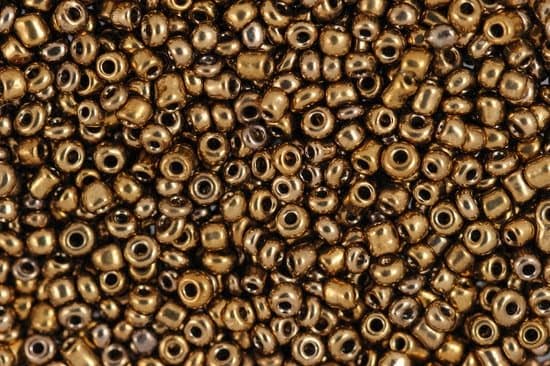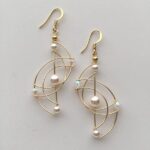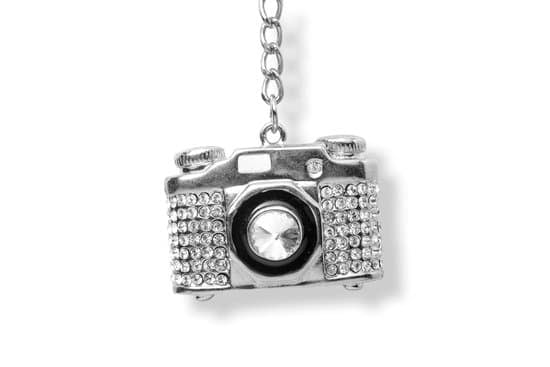Jewelry is not just an accessory; it’s an investment that holds sentimental value and can be passed down through generations. To ensure the longevity and beauty of your precious pieces, regular cleaning is crucial. However, not all cleaning methods are suitable for every type of jewelry. In this article, we will explore the various ways to clean jewelry effectively and safely.
Proper jewelry cleaning is essential for multiple reasons. Firstly, it helps to maintain its appearance by removing dirt, grime, and dullness that may accumulate over time. Regular cleaning can restore the vibrant shine and sparkle that initially attracted you to the piece. Additionally, keeping your jewelry clean contributes to its overall condition. Dirt and debris can cause wear and tear on delicate settings or even scratch gemstones if not removed promptly.
Understanding the different types of jewelry and their specific cleaning requirements is crucial for ensuring their longevity. Gems like diamonds, pearls, emeralds, rubies, and sapphires each have unique characteristics that necessitate specific care techniques. Likewise, metals such as silver, gold, platinum, and stainless steel need different approaches when it comes to maintenance. This article aims to guide you through these nuances so that you can confidently clean your jewelry without causing any harm.
Understanding the Different Types of Jewelry and their Cleaning Requirements
When it comes to cleaning jewelry, it is important to understand that different types of jewelry require different cleaning methods. Each type of jewelry has its own specific cleaning requirements in order to maintain its beauty and prolong its lifespan. By understanding the different types of jewelry and their cleaning needs, you can ensure that your precious pieces remain in pristine condition.
One of the first factors to consider when determining the cleaning requirements for your jewelry is the type of metal used. For example, gold and silver are two common metals used in jewelry that can be cleaned using mild soap and water. However, certain metals like platinum and titanium may require a more specialized approach.
Another crucial consideration is the type of gemstones present in your jewelry. Gemstones can vary greatly in terms of hardness and durability, so they must be treated with care during the cleaning process. While some gemstones can withstand gentle scrubbing with a soft brush, others may require a gentler approach or even professional cleaning.
In addition to metal and gemstone considerations, it is also important to take into account any other materials used in your jewelry. For instance, pearls and opals should never be submerged in water or cleaned with harsh chemicals as it can damage their delicate surfaces. Costume jewelry made with non-precious metals or synthetic stones may also require special handling.
| Type of Jewelry | Cleaning Method |
|---|---|
| Gold | Mild soap and water |
| Silver | Mild soap and water or silver polishing cloth |
| Platinum | Professional cleaning or specialized platinum cleaner |
| Titanium | Mild soap and water or professional cleaning |
| Diamonds | Mild soap and water or jewelry cleaner specifically formulated for diamonds |
| Pearls | Soft cloth and gentle wiping, avoid water |
| Opals | Gentle wiping with a soft, damp cloth, avoid chemicals and water submersion |
| Costume Jewelry | Gentle wiping with a soft cloth, avoid water and harsh chemicals |
By understanding the different types of jewelry and their specific cleaning requirements, you can ensure that your jewelry remains in excellent condition for years to come. Proper care and regular cleaning will help maintain the beauty and sparkle of your precious pieces while minimizing the risk of damage.
Common Household Cleaning Agents and their Effectiveness on Jewelry
When it comes to cleaning jewelry, many people turn to common household cleaning agents for convenience and affordability. However, not all household cleaners are safe or effective for use on all types of jewelry. It is important to understand the different effects that these cleaning agents can have on various metals, gemstones, and delicate materials.
One commonly used household cleaner for jewelry is dish soap. Dish soap is gentle enough to use on most types of jewelry and can effectively remove dirt and grime. However, it is important to avoid using dish soap on porous gemstones such as opals or pearls, as it can damage their delicate surface.
Another popular choice for cleaning jewelry is baking soda. Baking soda can help remove tarnish from silver jewelry and restore its shine. To use baking soda, simply create a paste by mixing it with water and gently scrub the jewelry with a soft cloth or toothbrush. Rinse thoroughly and dry with a clean cloth.
| Household Cleaning Agent | Effectiveness on Jewelry |
|---|---|
| Dish Soap | Gentle and effective for most types of jewelry, but should be avoided on porous gemstones |
| Baking Soda | Great for removing tarnish from silver jewelry |
The Do’s and Don’ts of Cleaning Jewelry
Do: Use Gentle Cleaning Methods
When it comes to cleaning jewelry, it’s important to remember that most pieces are delicate and can be easily damaged. Therefore, it is crucial to use gentle cleaning methods to avoid causing any harm.
One effective and safe method is using mild dish soap and warm water. Simply mix a few drops of dish soap with warm water, soak your jewelry for a few minutes, gently scrub with a soft toothbrush or cloth, rinse thoroughly, and pat dry with a clean towel.
Don’t: Use Harsh Chemicals or Abrasives
One of the biggest mistakes people make when cleaning their jewelry is using harsh chemicals or abrasives such as bleach, ammonia, or toothpaste. These substances can be too abrasive and cause scratches or damage sensitive gemstones and metals. It’s best to avoid using these products altogether and stick to more gentle options.
Do: Store Jewelry Properly
Cleaning your jewelry regularly is essential, but proper storage is equally important in maintaining its shine and preventing tarnish. When not wearing your jewelry, make sure to store it in a cool, dry place away from sunlight and moisture. Consider using individual bags or compartments to prevent pieces from scratching against each other. Additionally, storing silver jewelry with anti-tarnish strips can help prevent tarnish from forming.
Don’t: Clean Jewelry with Precious Stones Using Ultrasonic Cleaners
While ultrasonic cleaners are effective for cleaning some types of jewelry, they should be avoided for pieces containing precious stones such as emeralds, pearls, opals, or turquoise. The high-frequency vibrations produced by ultrasonic cleaners may loosen or damage these delicate stones over time. Instead, opt for gentler cleaning methods like the ones mentioned earlier.
Do: Seek Professional Advice for Specialized Cleaning Needs
If you have jewelry with intricate designs, delicate settings, or valuable heirlooms that require specialized care, it is best to seek professional advice. Professional jewelers have the expertise and proper tools to clean and restore jewelry without causing any damage. They can also provide recommendations on how best to care for and maintain your specific pieces.
By following these do’s and don’ts of cleaning jewelry, you can ensure that your precious accessories remain in pristine condition for years to come. Remember that taking the time to properly clean and care for your jewelry will not only enhance its appearance but also extend its lifespan. So, adopt these expert tips and advice into your regular cleaning routine to keep your jewelry sparkling like new.
Professional Jewelry Cleaning
While cleaning your jewelry at home can be effective, there are times when it’s best to leave it to the professionals. Professional jewelry cleaning offers a range of benefits that can help ensure your precious pieces remain in pristine condition. Here are some key advantages of professional jewelry cleaning and when you should consider seeking this service:
- Thorough Cleaning: Professional jewelers have specialized equipment and expertise to deep clean your jewelry, reaching areas that may be difficult for you to clean at home. They use ultrasonic cleaners, steam cleaners, and other professional-grade tools that effectively remove dirt, grime, and build-up from every nook and cranny of your jewellery.
- Safe Handling: One of the main benefits of professional jewelry cleaning is the assurance that your precious pieces will be handled with care. Professionals understand the specific requirements for different types of gemstones and metals and know how to handle them safely without causing any damage or scratches.
- Expert Inspection: When you take your jewelry for professional cleaning, it undergoes a comprehensive inspection by skilled professionals who can identify any loose stones or potential issues like worn prongs or clasps. This gives you an opportunity to address these problems before they worsen and potentially lead to loss or damage.
To determine whether professional jewelry cleaning is needed, consider the following factors:
- Value: If you have high-end or valuable jewelry pieces, it’s wise to opt for professional cleaning to ensure their longevity.
- Delicate or intricate designs: Jewelry with delicate designs or intricate settings may require special attention during cleaning. Professionals have experience in dealing with such pieces without compromising their integrity.
- Frequency of wear: Jewelry that is worn frequently accumulates more dirt and oils over time. Regular visits to a professional cleaner are recommended for these pieces to maintain their shine and beauty.
Natural and DIY Jewelry Cleaning Solutions
Natural and DIY jewelry cleaning solutions are gaining popularity among jewelry enthusiasts for their effectiveness and cost-efficiency. Many people prefer to use natural ingredients found in their own homes to clean their jewelry, as it is seen as a safer and more environmentally-friendly alternative to commercially-available cleaners. In this section, we will explore some common natural and DIY jewelry cleaning solutions and provide tips on how to find the perfect mix for your specific needs.
Vinegar and Baking Soda Solution
A combination of vinegar and baking soda is often used as a natural jewelry cleaner due to its ability to dissolve dirt and grime. To create this solution, mix equal parts white vinegar and baking soda until you form a paste-like consistency. Gently rub the paste onto your jewelry using a soft cloth or toothbrush, paying extra attention to any crevices or hard-to-reach areas. Rinse thoroughly with warm water and pat dry with a clean cloth.
Lemon Juice Soak
Lemon juice is known for its acidic properties which can help remove tarnish from metal jewelry. To create a lemon juice soak, squeeze fresh lemon juice into a bowl and add warm water in equal parts. Submerge your jewelry in the mixture for about 10-15 minutes, making sure all parts are covered. Remove the jewelry from the soak, rinse it under running water, and gently pat dry.
Toothpaste Polish
Toothpaste can be an effective DIY cleaner for certain types of jewelry, particularly silver or gold pieces that have lost their shine. Use a non-gel toothpaste without any additives or whitening agents – these can be too abrasive and may damage your jewelry. Apply a small amount of toothpaste onto a soft cloth or toothbrush, then gently scrub your jewelry in circular motions. Rinse well with water and dry thoroughly.
While these natural and DIY cleaning solutions can be effective, it’s important to note that they may not be suitable for all types of jewelry. Some gemstones and delicate metals require special care and may be sensitive to certain cleaning agents.
It is always recommended to do a patch test on a small, inconspicuous area of your jewelry before using any homemade cleaning solution. Additionally, if you have valuable or heirloom jewelry, it may be best to consult with a professional jeweler for guidance on the safest and most effective cleaning methods.
Cleaning Jewelry with Ultrasonic Cleaners
Ultrasonic cleaners are a popular method for cleaning jewelry, known for their ability to remove dirt and grime from even the most intricate pieces. This section will delve into the pros, cons, and best practices of using ultrasonic cleaners for jewelry cleaning.
Pros of Using Ultrasonic Cleaners:
- Deep Cleaning: Ultrasonic cleaners use high-frequency sound waves to create tiny bubbles in a cleaning solution. These bubbles agitate and remove dirt from the surface of the jewelry, even in hard-to-reach areas such as prongs or chains.
- Time and Effort Saving: Compared to traditional methods such as scrubbing with a brush or soaking overnight, ultrasonic cleaners can clean jewelry in a fraction of the time. This is particularly beneficial for those with large jewelry collections or professionals who need quick turnaround times.
- Versatility: Ultrasonic cleaners are suitable for a wide range of jewelry materials, including gold, silver, platinum, diamonds, gemstones, and more. They can effectively clean both solid pieces and those with delicate settings.
Cons of Using Ultrasonic Cleaners:
- Not Suitable for All Jewelry: While ultrasonic cleaners are generally safe for many types of jewelry, they may not be suitable for all pieces. Jewelry with fragile settings or glued-in stones should be avoided since the vibrations produced by the cleaner can cause damage.
- Limited Effectiveness on Certain Substances: Some substances may not respond well to ultrasonic cleaning, such as pearls and opals due to their fragile structure. It’s important to consult an expert or refer to the manufacturer’s guidelines before using an ultrasonic cleaner on these materials.
- Potential Damage: If not used correctly, ultrasonic cleaning can potentially cause damage to your jewelry. Excessive heat or prolonged exposure can loosen stones or weaken soldered joints.
Best Practices when Using Ultrasonic Cleaners:
- Use the Appropriate Cleaning Solution: Select a jewelry cleaning solution that is specifically formulated for use with ultrasonic cleaners. Avoid using harsh chemicals or ammonia-based solutions, as they can damage the jewelry.
- Follow the Manufacturer’s Instructions: Every ultrasonic cleaner operates differently, so always refer to the manufacturer’s instructions for proper usage. Pay attention to recommended cleaning times and temperature settings.
- Remove Fragile or Delicate Jewelry: If you have any jewelry pieces with delicate settings, glued-in stones, or known vulnerabilities to ultrasonic cleaning, it’s best to hand-clean them using a different method.
- Inspect your Jewelry: After cleaning in an ultrasonic cleaner, carefully inspect each piece of jewelry to ensure there is no damage or loosening of stones. If any issues are detected, seek professional assistance.
In summary, ultrasonic cleaners offer an efficient and effective method for cleaning jewelry. However, it is important to understand their pros and cons and follow best practices to avoid potential damage and achieve optimal results.
Special Care for Precious Stones and Delicate Metals
When it comes to cleaning jewelry, special care must be taken with precious stones and delicate metals to avoid causing any damage. These types of materials require more gentle cleaning methods to maintain their beauty and durability. Here are some tips on how to properly clean these types of jewelry.
Firstly, when dealing with precious stones such as diamonds, rubies, or sapphires, it’s important to remember that harsh chemicals can potentially damage them. Instead of using common household cleaning agents, consider using a mild detergent or a mixture of warm water and gentle soap.
Simply soak the jewelry in the solution for a few minutes, then use a soft brush or cloth to gently remove any dirt or grime. Be sure to rinse thoroughly with clean water and pat dry before storing.
Delicate metals like silver and gold also require special care during the cleaning process. These metals can easily become scratched or lose their luster if not handled properly. To clean silver jewelry, use a polishing cloth specifically designed for silver. Avoid using chemical dips or abrasive cleaners as they can cause damage. For gold jewelry, use a mild detergent mixed with warm water and gently scrub with a soft toothbrush. After cleaning, rinse thoroughly and dry with a soft cloth.
In addition to using the right cleaning methods, it’s important to store precious stones and delicate metals correctly to prevent damage. It’s best to store each piece of jewelry separately in a soft pouch or individual compartment in a jewelry box. This will help prevent scratching and tangling of chains or bracelets. Avoid exposing these types of jewelry to extreme temperatures or humidity as this can also cause damage over time.
By taking special care when cleaning precious stones and delicate metals, you can ensure that your jewelry remains beautiful and in good condition for years to come. Remember to always follow expert advice when it comes to caring for different types of materials, and when in doubt, consider consulting a professional jeweler for guidance. With the right cleaning techniques and proper maintenance, your jewelry will continue to shine and sparkle.
Preventing Tarnish and Maintaining Jewelry Shine
Tarnish is a common issue that jewelry owners face, especially with silver pieces. Tarnish occurs when metal reacts with certain substances in the air, resulting in a dull, discolored appearance. Fortunately, there are several long-term care tips that can help prevent tarnish and maintain the shine of your jewelry.
One crucial step in preventing tarnish is proper storage. Jewelry should be stored in a cool, dry place away from direct sunlight. Exposure to moisture and humidity can accelerate tarnishing, so it’s important to avoid storing your jewelry in the bathroom or other damp environments. Additionally, storing your jewelry individually in soft pouches or separate compartments can reduce scratching and further protect against tarnish.
Regular cleaning is another essential aspect of maintaining the shine of your jewelry. Mild dish soap mixed with warm water is often sufficient for cleaning most types of jewelry. However, it’s important to avoid using abrasive cleaners or harsh chemicals, as these can damage delicate gemstones or remove protective coatings on certain metals. Instead, gently scrub your jewelry with a soft brush or toothbrush to remove any dirt or debris.
Lastly, consider removing your jewelry before engaging in activities that may expose it to harsh chemicals or abrasion. This includes activities such as applying perfume or body lotion while wearing your jewelry, as these substances can react with metal and lead to tarnishing. Similarly, remove your jewelry before swimming in chlorinated pools or hot tubs to protect against chemical damage.
By following these long-term care tips for preventing tarnish and maintaining the shine of your jewelry, you can extend its lifespan and keep it looking gorgeous for years to come. Remember to store your pieces properly, clean them regularly with mild soap and water (avoiding harsh chemicals), and be mindful of activities that may expose them to potentially damaging substances. With proper care, your jewelry will continue to shine and bring beauty to your life.
Conclusion
In conclusion, achieving stunningly clean and sparkling jewelry requires a combination of knowledge, proper care, and regular maintenance. Cleaning your jewelry not only helps to maintain its beauty but also extends its lifespan. By understanding the different types of jewelry and their cleaning requirements, you can ensure that you are using the most appropriate methods and cleaning agents.
While common household cleaning agents may seem convenient, it is important to be aware of their impact on different types of jewelry. Some substances may be too harsh and can cause damage or discoloration. Expert tips and advice can guide you on the do’s and don’ts of cleaning jewelry, allowing you to handle your precious pieces with confidence.
Consider professional jewelry cleaning for more delicate or valuable items. Professional cleaners have the knowledge and specialized equipment to effectively clean your jewelry without causing any harm. Additionally, they can inspect your pieces for any necessary repairs or adjustments.
For those who prefer natural or DIY solutions, there are various options available that can safely clean and restore the sparkle to your jewelry. It is important to find the perfect mix that suits your preferences and the specific needs of your jewelry.
Lastly, maintaining long-term shine and preventing tarnish involves proper storage and care. Avoid exposing your jewelry to harsh chemicals or excessive moisture, which can accelerate tarnishing or cause damage. Regularly wiping down your pieces with a soft cloth after each use can help remove oils and dirt that may accumulate over time.
By following these guidelines and investing in proper care for your jewelry, you can achieve stunningly clean and sparkling pieces that will continue to bring joy for years to come. Remember, taking care of your jewelry is an act of preserving not only its beauty but also its sentimental value.

Welcome to my jewelry blog! My name is Sarah and I am the owner of this blog.
I love making jewelry and sharing my creations with others.
So whether you’re someone who loves wearing jewelry yourself or simply enjoys learning about it, be sure to check out my blog for insightful posts on everything related to this exciting topic!





